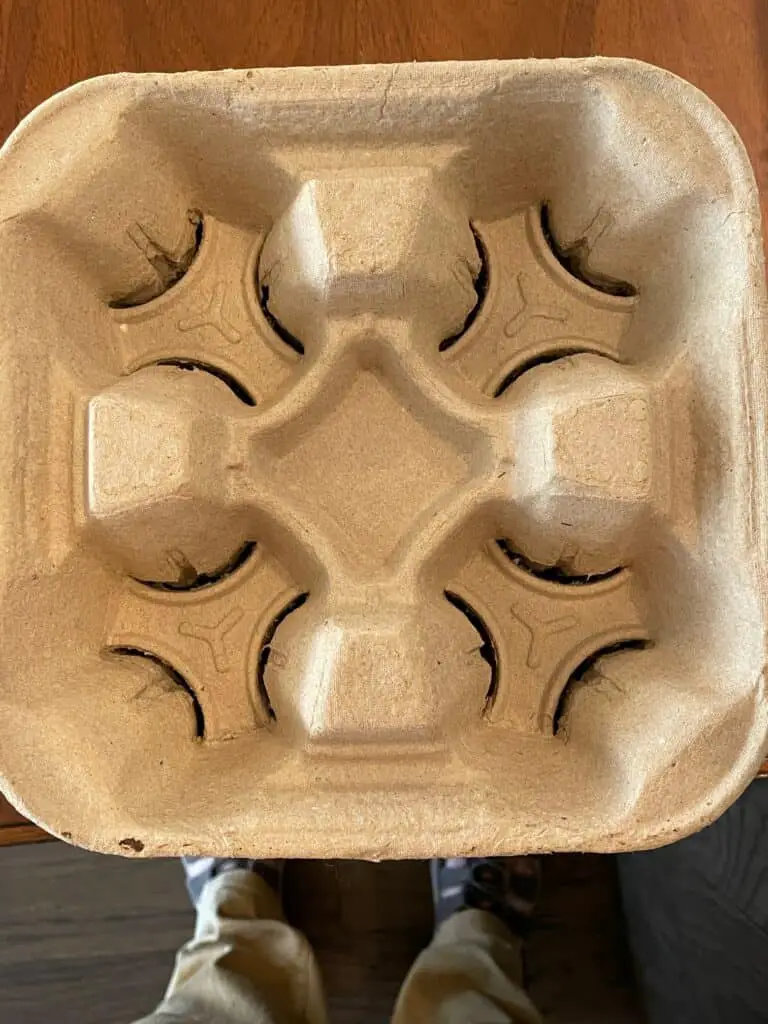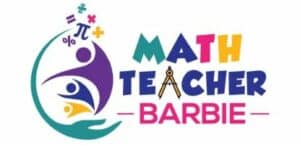Few things will help a student keep up in math better than fluently and confidently knowing their multiplication tables. Teachers all over see this slowing students down in math class and undermining students’ abilities to keep up with a variety of math tasks. I have many times seen students, even those who make it to calculus, struggle needlessly to learn seemingly unrelated math concepts simply because they couldn’t come up with multiplication facts quickly enough to follow examples and ideas.
Yet, recent education research has shown that our old methods of memorizing multiplication facts actually also undermine future math success in multiple ways. Flashcard-style rote memorization can increase apparent fluency, but at the expense of understanding what the facts mean and when they should/could be used. Traditional flashcards are also boring, so students begin to associate math with boredom and uselessness — just something they have to get through because people tell them they have to.
Timed “multiplication facts” tests are known to increase cortisol and other stress hormones in the brain. As general stress levels in western society have increased (even into the childhoods of particularly Gen X and later), adding these bursts of stress increase those hormones and can sometimes leave students in a more permanent state of stress-arousal. Though a few students will always thrive on these bursts of stress and challenge, a perhaps larger number will begin to associate math with stress, discomfort, and perceived failure.
In-class competitions, such as a race to master multiplication facts fastest, encourage use of these otherwise-discouraging techniques with their inherent flaws, as well as leave large portions of the class feeling “behind,” “slow,” or “not smart in math.”
So, what are the alternatives? In the sections below, I’ll do a quick roundup and discussion of a variety of different sources and tools I have encountered that both build multiplication fact fluency, are informed by current research on learning, and overcome many of the flaws of the older methods of memorization. They all rely on repeated exposure in multiple contexts and multiple representations to build true fluency and internal ownership of the multiplication facts in and by learners.
This post contains affiliate links. If you purchase through these links, I may earn a small commission at no additional cost to you. You can read more about how I choose affiliates and products at my affiliate page.
This post was originally published at mathteacherbarbie.com. If you are viewing this somewhere else, you are viewing a stolen version.
Modern, research-backed flashcard methods
Flashcards are not what they used to be. With modern technology, a lot of technique and research that was more esoteric and less well-known in the old days of cardstock are now accessible to many.
Spaced-repetition is one of the old flashcard techniques that only a few knew how to use to its best effect. It has been most widely studied in language learning but is effective in any memorization-style learning. Today, however, many flashcard and other apps (such as the ever-popular Duolingo) build this concept in. In short, the more times in a row you get a fact correct, the less often it appears in the rotation. Facts keep coming up to keep them fresh in your mind.
At least some of the emotional and efficiency advantages of spaced-repetition are easy to see. Learners end up spending most of their time on lesser-known facts for greater learning potential and more rapid new releases of the happy brain chemicals that come with learning something new. Yet, well-known facts are kept “fresh” as well as interspersed often enough to build confidence and thus enjoyment of the process itself.
Because spaced-repetition is a old, widely-studied strategy, there are many resources. A quick search on “spaced repetition” will lead you to the app or technique that works best for you if you choose this route.
Another long-known but little-implemented strategy for learning is frequent, regular, but shorter study sessions. Doing 10-15 cards two or three times a day every day tends to be more effective for activating long-term memory than doing a full set of cards every so often.
I know first hand the positive impact of quizzing myself when learning something new. When I am faced with learning student names at the beginning of a new term, I can try all I want to learn with assistance, seating charts, pictures, and name tags or plates, but I never truly learn them until I quiz myself without those assists in place. I have to make and correct errors and before my memory for those names and faces actually becomes knowledge that I can own and use.
This is what frequent, shorter sessions encourage. Shorter sessions are easier to engage in, keep attention through, and find time for (5 minutes on a bus for example). Frequent sessions force your brain to retrieve prior knowledge. This retrieval is key to moving knowledge from short-term to long-term memory and is the key to my finally learning student names each term.
Another flashcard technique that modern technology makes easier is associating and portraying multiple representations of each fact, rather than simply a static question-and-answer format of traditional flashcards. This builds understanding and connections to prior knowledge that are essential for knowing how and when to use the facts you’re learning.
Multiplication by Heart by mathigon.org (in partnership with Math for Love where you can purchase an offline version (not sponsored*)) is a quintessential example of all of these in action. The online version automatically incorporates all three of these research-backed strategies: spaced-repetition, enforced shorter sessions, and multiple representations including engaging visuals.
*But I’d love to chat about affiliate opportunities, Math For Love!
Talk Math With Your Kids #tmwyk
We know more and more that frequent, short conversations with our children are more effective than longer targeted conversations, especially on pressure-filled topics. You know the ones I mean, right?
Math really isn’t any different in that respect.
Math is pervasive. It’s not isolated just to school nor just a hoop to jump through. It is an attempt to describe patterns in our world, an attempt to be able to communicate efficiently and effectively about those patterns, and an opportunity to be able to explore how different seemingly-different phenomenon are connected to each other and have similar underlying structures.
There’s a movement afoot* to notice and wonder about math with our kids in small conversations every day. (For ideas check out the hashtags #tmwyk and #noticewonder in your favorite social media.)
An easy way to start is with arrays. My posts Using Arrays to Teach Multiplication and Arrays: Powerful Early Math Tools and my video Summer of Arrays give both the background of what these are, some examples of where you might spot them, and ideas how to use them to build both numeracy and meaningful fact fluency. There are several advantages to using this idea to start your #tmwyk journey:
- There are mathematical ideas to be found in arrays for children and adults of all ages and stages in their math journey
- They engage multiple senses: they are often beautiful and often touchable
- They are everywhere once you start looking
- They offer fact-exposure at multiple stages of learning: counting, skip-counting, adding, and multiplying
- They offer a variety of representations
- There are often different arrays that can be discussed in the same item, such as the beverage holder below

There are also books that can help instigate these discussions. I recommend particularly How Many? (affiliate link) to start conversations about multiplication facts (and the buildup thereto), conversations about units and descriptive language, as well as initiating ideas of combining arithmetic operations and multi-step problem solving (such as multiplication and subtraction to find how many remain).
*Started by Christopher Danielson, but now living well beyond just his spaces. Hey, Christopher, I’d also be interested in chatting about affiliate opportunities with you if you’re interested!
Play games
If your family enjoys board and card games, a couple of popular favorites that are known to play well are Prime Climb for mid- and upper-elementary and older and Tiny Polka Dot for groups that involve preschoolers and early elementary students who are learning pre-multiplication skills (affiliate links).
Several independent bloggers list lots of ideas for learning multiplication facts.
- Jessica at whatihavelearnedteaching.com lists several games that can be played with items you may already own such cards, dice, and paper-and-pencil
- weareteachers.com provides unique ideas for games to practice multiplication facts, including downloadable printables to facilitate some of the games
Practice multiplication strategies
Children are often able to double and halve numbers well before they begin to multiply. Use this fact to strategize multiplication as well as to connect it to concepts that come naturally.
Multiplying by 1s, 5s and 10s are often considered some of the easiest tables to memorize. Start with these as well as the 2s table (for doubling, above).
Then, capitalize on the early exposure your child has had to the distributive property (of multiplication across addition). A number times 7 can be thought of as that number times 5 plus that number times 2. Yes, this slows down the computation in the moment, but with enough practice, even the 7s table, known to be one of the hardest because of the seeming lack of patterns (the pattern is there, but is less visual and obvious) can be mastered.
Here are a couple of sources that discuss strategies that can aid in mastering multiplication:
- Mary at teachingwithamountainview.com breaks down the order in which she teaches the times tables to maximize both the natural concept of doubling and using the “easy” tables to help learn the “hard” ones
- mathisfun.com breaks down strategies using the structure of the times tables themselves to learn efficiently and make connections between the facts. It also provides online resources to practice those skills
- Kate at kateshomeschoolmath.com discusses some of these same strategies and offers printables to practice them
Use everyday items, such as money
Use pennies to practice learning the 1s table by counting. Let the child count the pennies, then recite the multiplication fact with them immediately after: “one…two…three…four” followed by (together) “so 1 times 4 equals 4. 1 cent times 4 equals 4 cents.”
Use nickels to practice learning the 5s table by skip-counting. The child skip-counts the nickels and reports the total amount of money: “five…ten…fifteen…twenty…twenty-five. Twenty-five cents.” followed by (together) “so 5 times 5 equals 25. 5 cents times 5 equals 25 cents.”
Similarly for using dimes to learn the 10s table.
Keep it lighthearted, fun, and frequent
Mostly, build practice of these facts into daily activities. “Traditional” targeted, intense practice of facts sets many students up for feelings of failure and frustration. Making the practice playful, tying it to everyday activities to associate both purpose and beauty with the facts, frequent exposure, and active recall all work together to maximize the brain’s potential for absorbing the facts themselves. It might feel like it takes a little longer in the short-run, but the facts will be longer-lasting and much more valuable to the learner in the future. This deep learning of the facts and positive associations with math will pay off in learner confidence as well as opportunities for success in future math classes.
And aren’t confidence and opportunities to succeed what we want for all of our children?
You’ve Got This!
